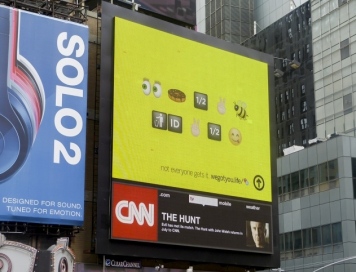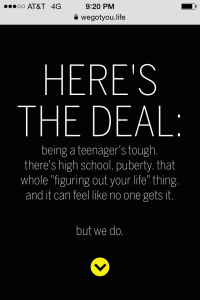The emoji has become one of the most irresistible form of modern communication. Instagram recently reported that 48% of the text used on the social media platform is emojis. In a recent study conducted by Talk Talk Mobile, 72% of 18-25 year-olds admitted they found it easier to express their feelings through emoji rather than text. “I think people are connecting with each other more often because emoji makes it more fun,” suggests Dan Brill author of Emojinaylsis.
One of my classmates has mentioned, that friends are getting worried about her well-being when no bunch of emojis is attached to her text messages. What are emoji?
Emoji dialect reduced words to colorful tiny images or “picture characters”. Emojis were originally associated with cellular telephone usage in Japan, but now popular worldwide. In fact, emojis are mix of ideograms and pictograms. A pictogram is an image that resembles the object it represents. An ideogram suggests an abstract thing or idea. Emojis are frequently incorporated into text, email, twitter, Facebook and chat applications to convey a message or an emotion. Check out Emoji Cheat Sheet to master your emoji decoding skills. There are currently over 1,281 characters recognized as emoji.
Where to Find Emojis
Popular places to find emoji include Twitter, Facebook, Instagram, Snapchat, Tinder, Skype, Google Hangouts, Whatsapp, Slack, iMessage and more. Emoji is supported on all major platforms including iOS, OS X, Android and Windows. Find the meanings of smileys, symbols, emoticons and other pictograms used in these apps.
Emojis are so popular that public health agencies are starting to use them in public health campaigns and communications to attract mobile and digitally-savvy society.
About a month ago, July 7, 2015 the Partnership for Drug-Free Kids has launched a new multimedia campaign for teens that uses emojis to communicate the challenges of “figuring out life” and negative influences that teens face, including peers pressure, stress, self image, relationships, drug and alcohol, bullying.
If you know anything about teens, you would agree that these are the toughest topics to explore with them. “Speak to teens in their language”, – is campaign’s unique approach.
The campaign messaged to teens: “sometime it’s hard to put all the stuff you’re going thought into words. so we put them into emojis instead”.
“Linguistically emojis were the perfect fit for our audience – emojis are today’s teen slang. The fact that our emoji messages effectively act as codes allowed us to target our communication to a very specific audience, while engaging them in an ongoing conversation”, sharing Amanda Roberts with Hill Holliday, agency-campaign creator.
The initiative is anchored on mobile-based platform which was another brilliant find for this campaign considering 73% of teens have access to a smartphone and time spent on phone is getting close to their wake time, 24% responded they use it “almost constantly”.
The initiative titled #WeGotYou.
 “If you slip up, it’s OK,” Kristi Rowe, CMO at the Partnership for Drug-Free Kids said. “Not everyone gets it, but we do. We got you.”
“If you slip up, it’s OK,” Kristi Rowe, CMO at the Partnership for Drug-Free Kids said. “Not everyone gets it, but we do. We got you.”
Campaign is empowering teens to live Above the Influence with resources and support of on-line community.
Fun interactive way allows teens to “get emojinal” by cracking a series of codes, share the embedded short video messages and memes. Teens are provided thought-provoking facts, empowering messages, as well as the ability to submit their own emoji sentences to be posted to the site.
Final Take:
Emojis are innovative way of communicating for public health professionals to drive mobile engagement and text messaging campaigns. It is genius strategy that opens up a whole new world of possibilities for successful world-wide outreach using emoji universal dialect.
“There is no recipe for the successful use of social tools. Instead, every working system is a mix of social and technological factors”, C. Shirky says, Here Comes Everybody.
Fusion of public health expertise, mobile technologies and stronger personal connection is an important advancement of digital communication for social good. Emojis help people to express themselves, encourage conversation about complex topics, build trust, bridge generations and they are cute and adorable, after all! Pack your words with these tiny positive, humorous emojis and you will be surprised by their big power!
References:
- What government agencies need to know about emojis, Part 1 and Part 2.
https://www.govloop.com/community/blog/government-agencies-need-know-emojis-part-1/ https://www.govloop.com/community/blog/government-agencies-need-know-emojis-part-2/ - The Partnership for Drug-Free Kids Unveils New Multimedia Youth Campaign Using Emojis to Let Teens Know #WeGotYou http://www.prnewswire.com/news-releases/the-partnership-for-drug-free-kids-unveils-new-multimedia-youth-campaign-using-emojis-to-let-teens-know-wegotyou-300109675.html
- You need to Speak Emoji to Understand This Anti-Drug Campaign. http://www.adweek.com/news/advertising-branding/you-need-speak-emoji-understand-anti-drug-campaign-165805
- Above The Influence http://abovetheinfluence.com/living-above/
- Partnership for Drug-Free Kids http://www.drugfree.org/
- Pew Research Center. Teens, Social Media & Technology Overview 2015
http://www.pewinternet.org/2015/04/09/teens-social-media-technology-2015/








You must be logged in to post a comment.